Arturo and the vertical sea
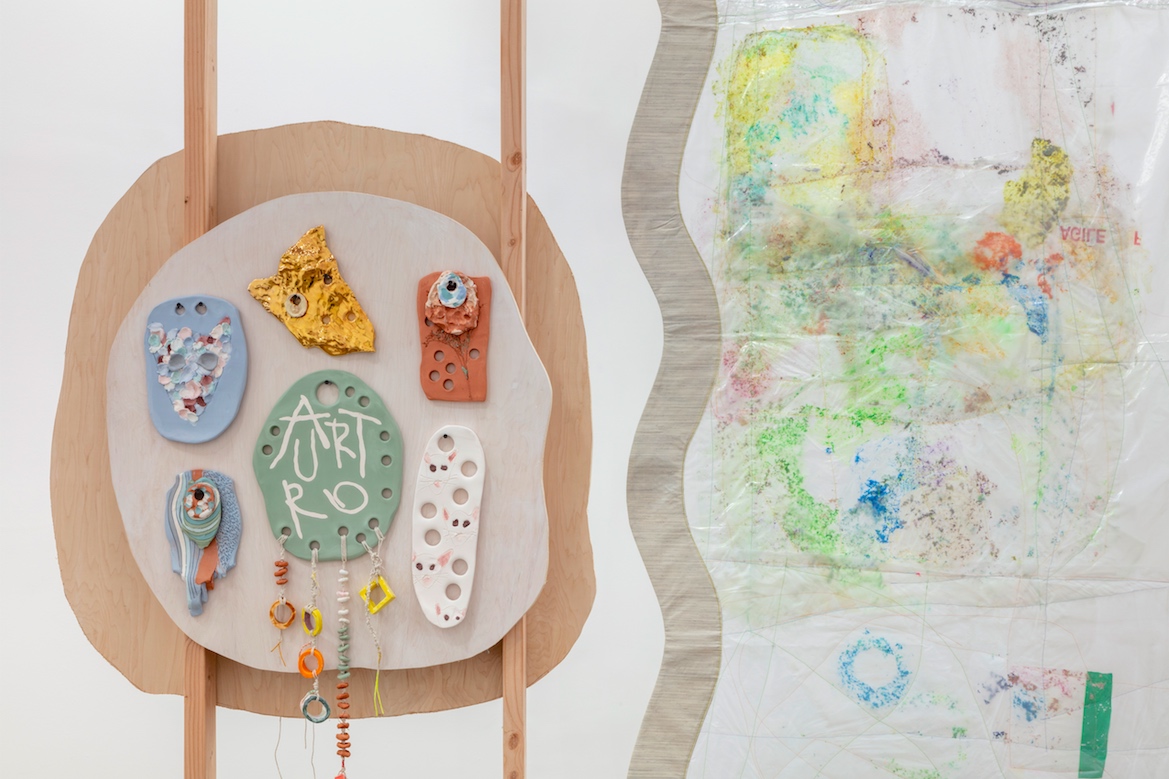
Arturo and the vertical sea is the title of the second solo show by Ludovica Gioscia at Baert Gallery in Los Angeles.
Three large-scale wooden structures act as looms that weave together different textures, colour palettes and materials to form ecological assemblages. These giant looms host devotional ceramic compositions resembling ex-votos, textile hangings acting as portals to interspecies tenderness, talismanic robes, double-sided hand painted wallpapers and watercolours recording telepathic exchanges.
Many works in the show are collaborations between Gioscia and her cat Arturo that employ intimacies such as affection, joy and purring as elements of production. These organic and emotional ingredients are distilled through processes borrowed from Vibrational Medicine, with the distillate permeating a series of new papier-mâchés. These are stacked on live edge wooden shelves made in collaboration with designer Mark Thurgood from wood sourced from Kew Gardens in southwest London, home to the largest and most diverse botanical and mycological collection in the world.
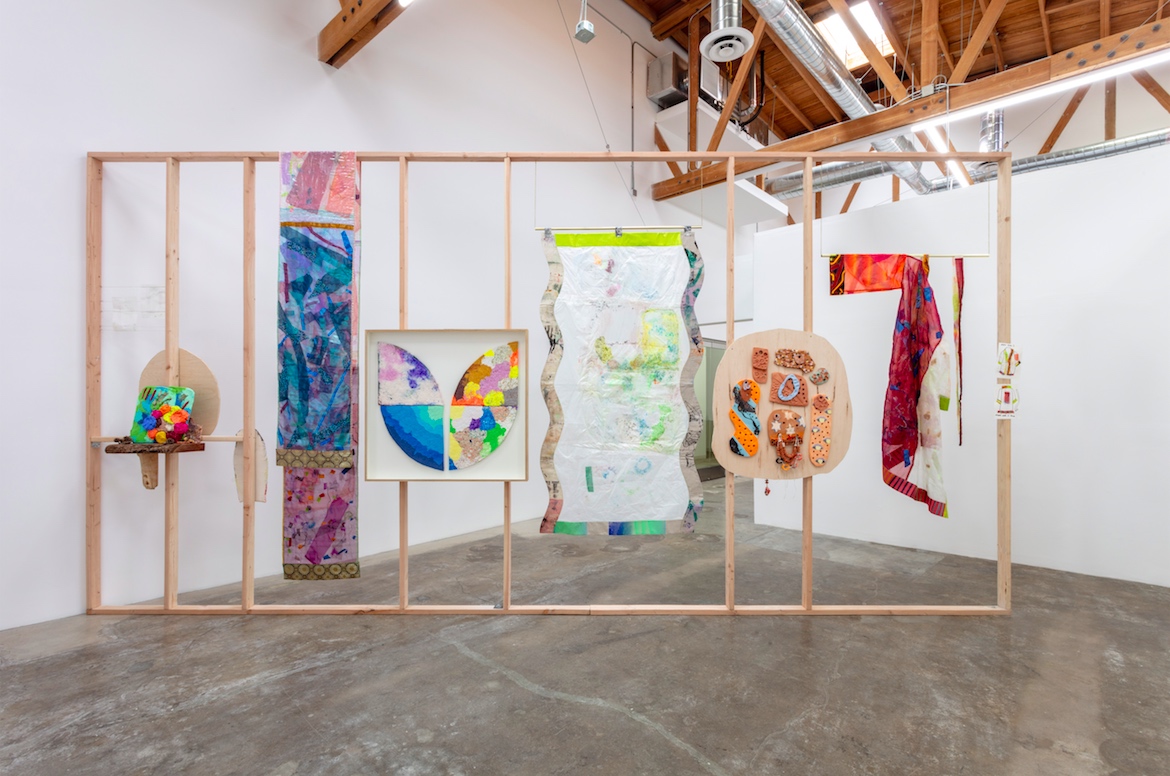
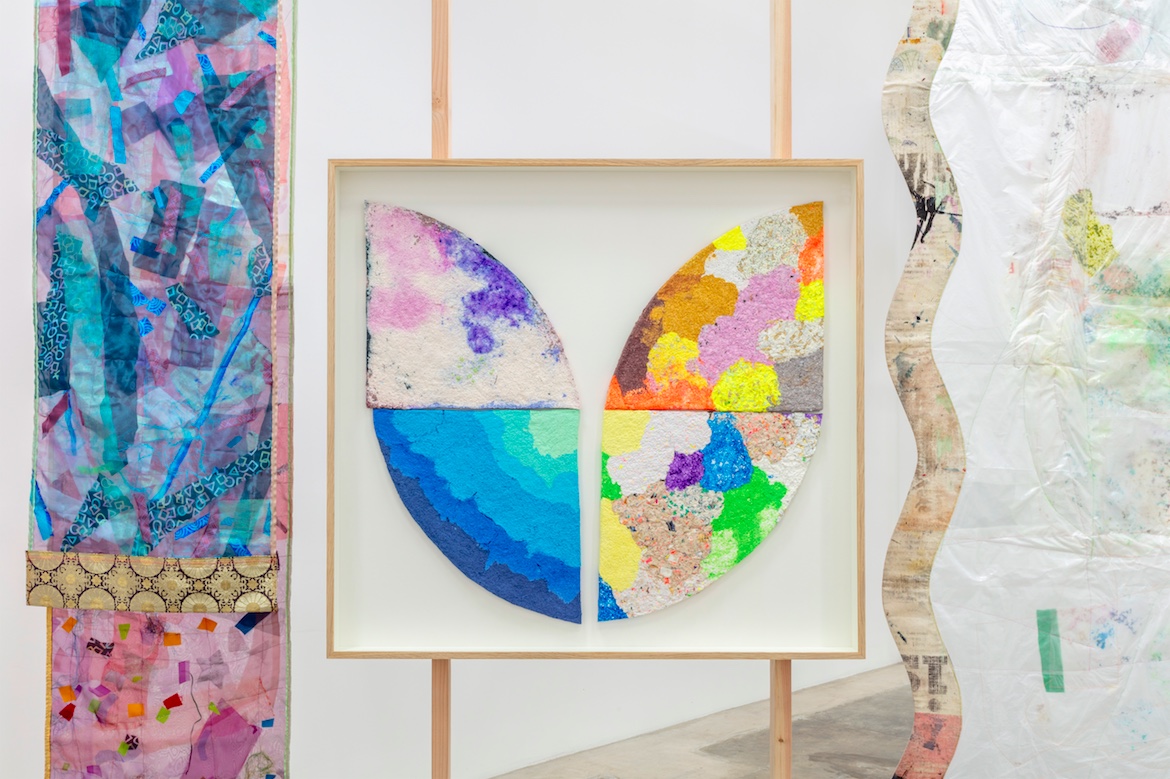
Ludovica Gioscia, Arturo and the vertical sea, installation view at Baert Gallery, Los Angeles 2021, Photo: Joshua White
With titles such as Mapping Emotions, Gift For Arturo, Autumn Harvest and Making Kin, the layered compositions are informed by Staying with the Trouble: Making Kin in the Chthulucene, a recent book by multispecies feminist theorist Donna J. Haraway. In the context of climate change, Haraway offers new perspectives on how we could reconfigure our relations to the earth and all of its inhabitants.
‘Making kin’ refers to the act of cultivating connections with the other souls - plants, animals and microbes - with whom we share the planet. Although not biologically family-based, such kinship connections foster equally important and urgent obligations and consequences. To make kin is a multi-species call for care.
To accompany the show Gioscia has created an artist’s book in collaboration with curator Marina Dacci titled Cosmic Flow. Inspired by the artist’s teenage diaries and sticker albums, the publication is a non-linear journey into her practice, punctuated by Dacci’s texts printed on unbound tracing paper.
A real labour of love, it includes four different print methods - a screen printed cover, laser printed pages with risograph accents and stickers.
The artist’s recent explorations foreground a desire to break down the boundaries between different realms: vegetable, animal, human. After experiencing moments of intense connection with ‘nature in its natural state’, her most recent works have consisted of maps into which Gioscia has ‘teleported’ the energy of every living thing she has been in contact with. In these pieces shapes and colours change with time, but not just as a result of a simple alteration of the materials nor of the working palette that they inevitably reflect. Shelf assemblages or fans, into which scraps of nature have been embedded, present themselves formally as still lives – yet they vibrate, pulsate, radiate light. The papier-mâché works, in particular, recall an animistic world where material is brought back into a relation with essence. This is live matter, transfigured. It is a distilling of affection that installs itself into the work like an extension of bodily experience, from within which a new form of spiritual connection is born in holistic relation with the cosmos. The small ceramic works, for hanging or for wearing over one’s heart, emit thaumaturgic vibrations and almost take on a totemic function. The act of relating to these subtle bodies becomes itself a sort of negation of anthropocentrism.
— Marina Dacci
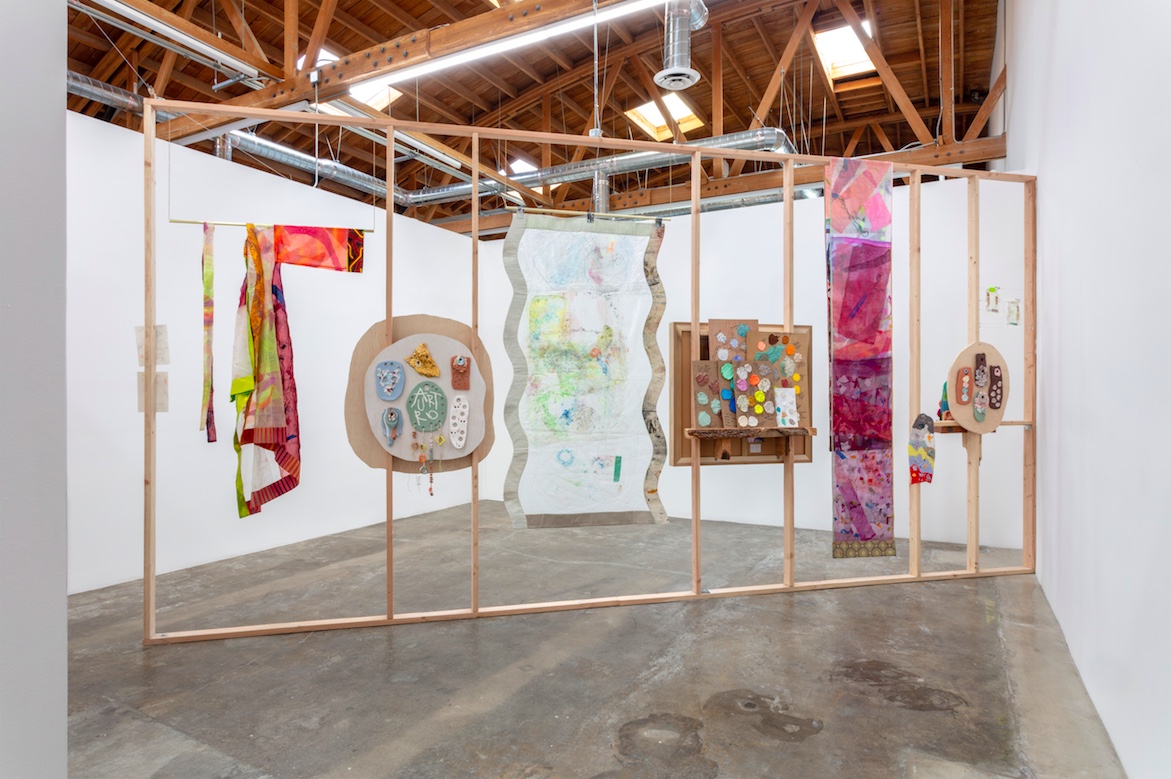

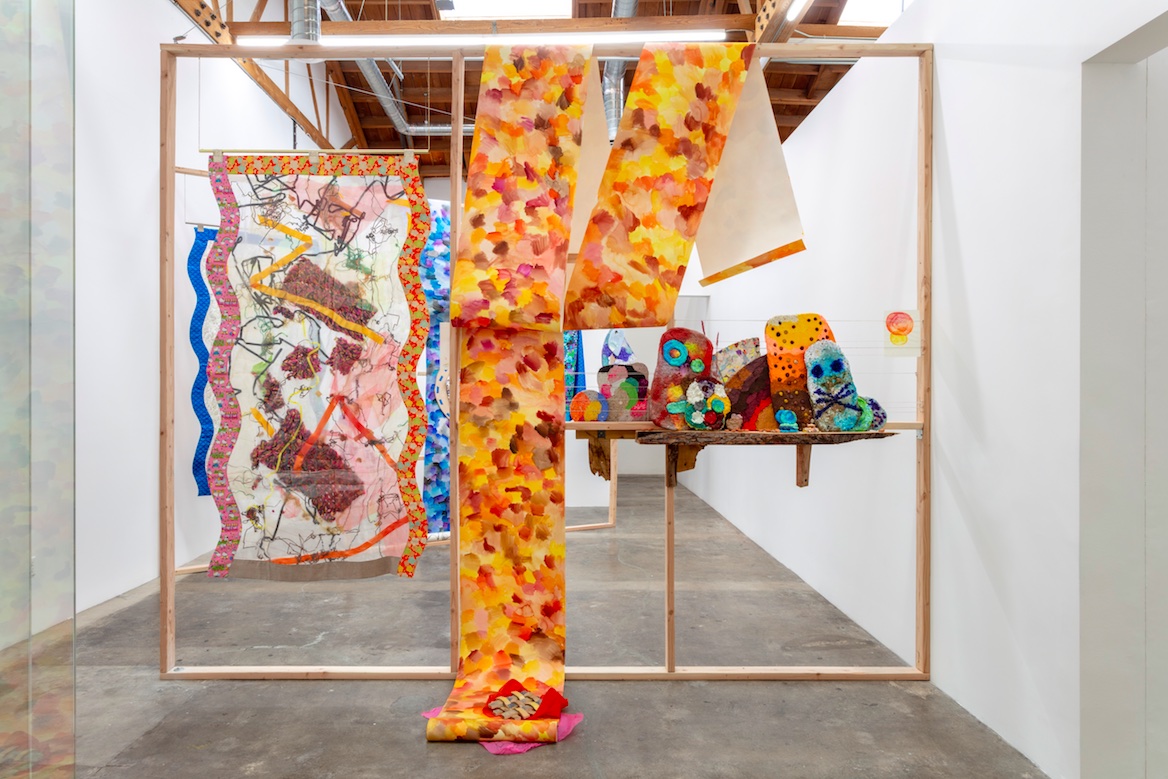
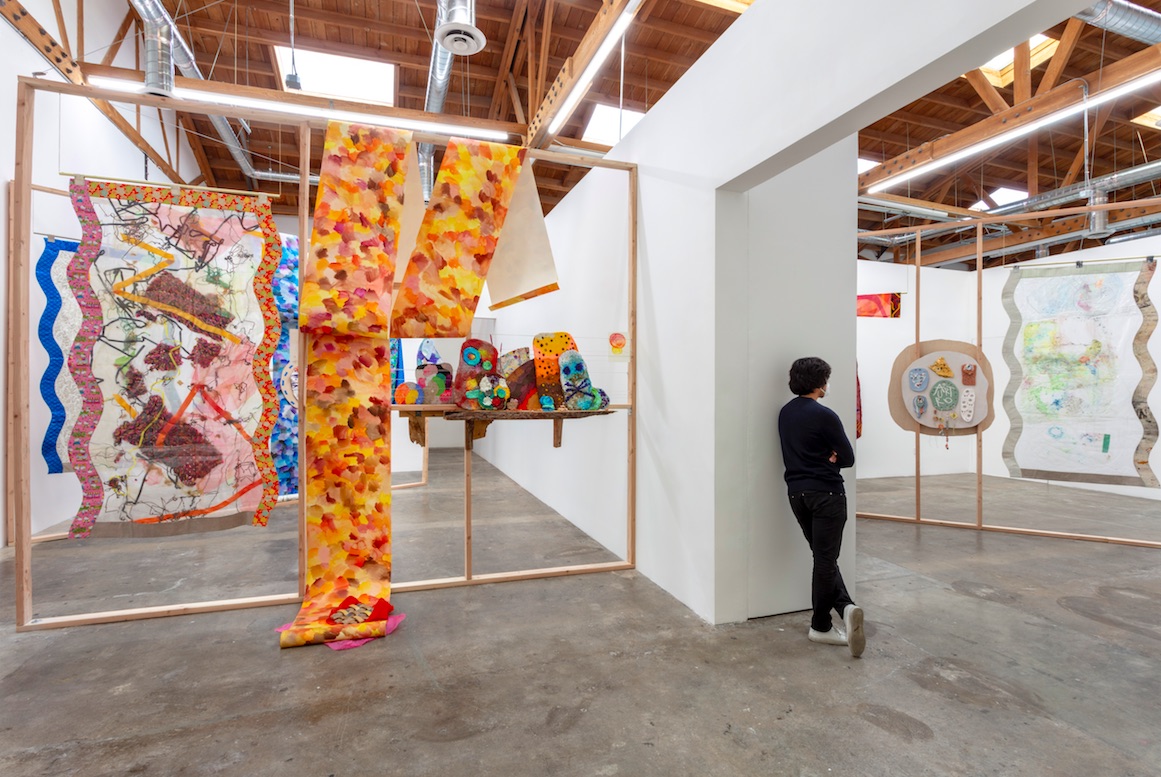
Ludovica Gioscia, Arturo and the vertical sea, installation view at Baert Gallery, Los Angeles 2021, Photo: Joshua White
Andrea Lerda in dialogue with Ludovica Gioscia:
AL
Your practice well expresses the potential of art to generate new visions.
In the exhibition “Arturo and the vertical sea”, in particular, you venture into a reflection of great urgency which is affecting many disciplinary fields. I refer to the debate on the need to redefine the relationship between the human species and the multispecies complexity with which we cohabit this Planet.
Dream, imagination, energetic aura seems to me three important tools to generate new connections with the alterity.
Recently, the Italian anthropologist Matteo Meschiari said that “animism is one of the possible ways to generate new narratives, to go beyond our simple circle of possessions and belonging and to exercise our imagination”. Animis as a possible strategy to progress from the anthropocentric to an ecocentric or multicentric vision.
“Arturo and the vertical sea” is the representation of a world within which you and Arturo are in dialogue. Images, works, forms and colors tells about a dimension of generative coexistence full of meanings to be deciphered.
Somehow you formalize an animistic world. Your works propose, in a kind of way, a new type of language, a new empathic connection with that Edward O. Wilson, in his book "Biofilia" (Harvard University Press, 1990) defined “the biologic maelstrom”, isn’t it?
LG
I must admit I wasn’t aware of Edward O. Wilson’s theories. Thank you for sharing with me extracts from his seminal book Biophilia. It has been fascinating to read about Wilson’s ideas around a total co-existence of life as if it were one organism, a melting pot in which organic matter is entwined and layered into a constantly evolving force. Or at least this is my interpretation of the paragraph in which he describes life in a forest as a ‘biological maelstrom’. It reminds me of James Lovelock’s Gaia theory, in which life on planet earth interacts with inorganic matter to form a self-regulating complex system which sustains the right conditions for existence on the planet. I am very fond of Lovelock’s early work.
I do see my installations as worlds which contain a plethora of actors, all in dialogue with one another. Apparently chaotic, all the works co-exist to generate a variety of narratives. Isolated these actors would feel lonely, possibly sad.
Wilson’s description of life in the forest feels close to home at the moment. For my current solo show Arturo and The Vertical Sea, I have collaborated with Arturo, my beloved feline companion. I do feel that at times we merge into one. I can only describe this state as semi-liquid, warm, profoundly reassuring, and purring. As a child my grandmother used to beat egg yolks with sugar and give it to me as a snack. It is a traditional Italian dessert called zabaglione. That is how we are together. We are zabaglione.
Our daily life together is tenderly woven into the new body of works. For example, there are a few small watercolours with splashes of vibrant colours. These are signals Arturo sends me when I gently hold his paw and we are about to drift off into deep sleep. That space just before falling asleep is a moment in which our minds connect in a particularly intense way. Many works contain Arturo’s joy, which I extrapolate from his combed hair and materials that he enjoys such as tissue paper. Our living room is covered with the latter. Arturo’s hair is also present in a few textile assemblages, one of which contains rolls of magnetic tape. My mother used to record the seances she performed in the eighties on cassettes. As a consequence of her rituals, magnetic tape to me has otherworldly properties – it connects the world we live in to the spirit world.

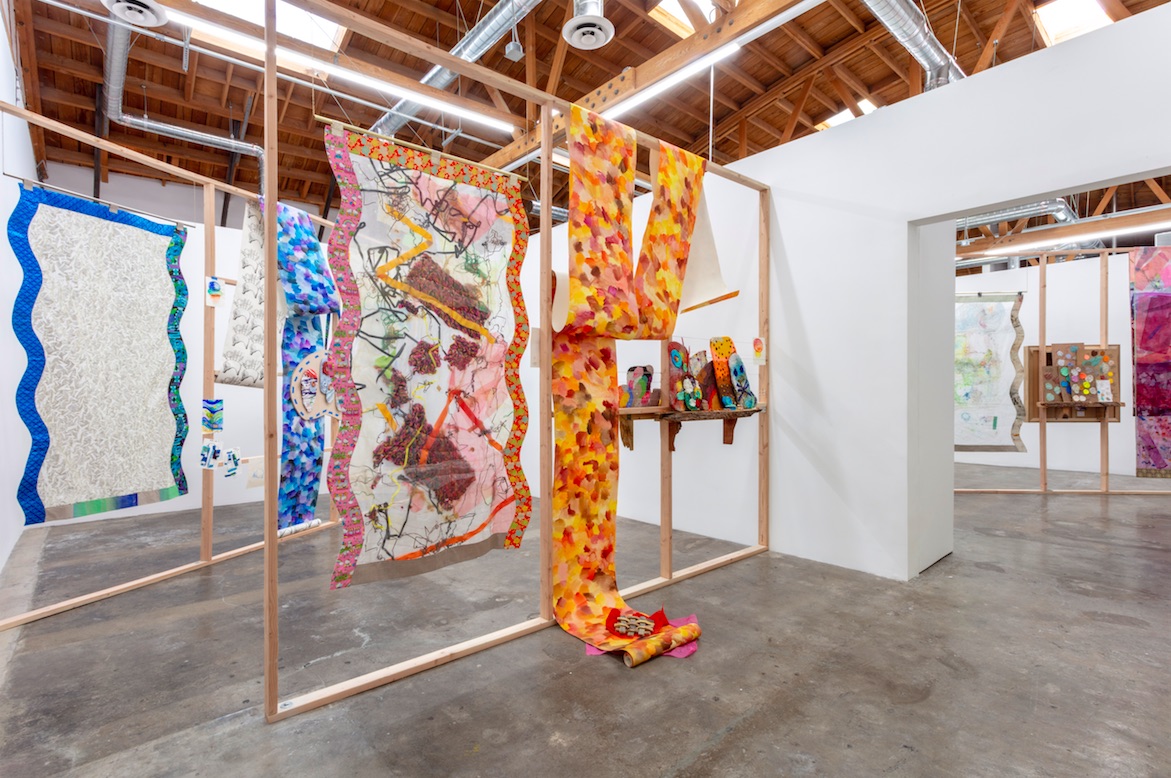
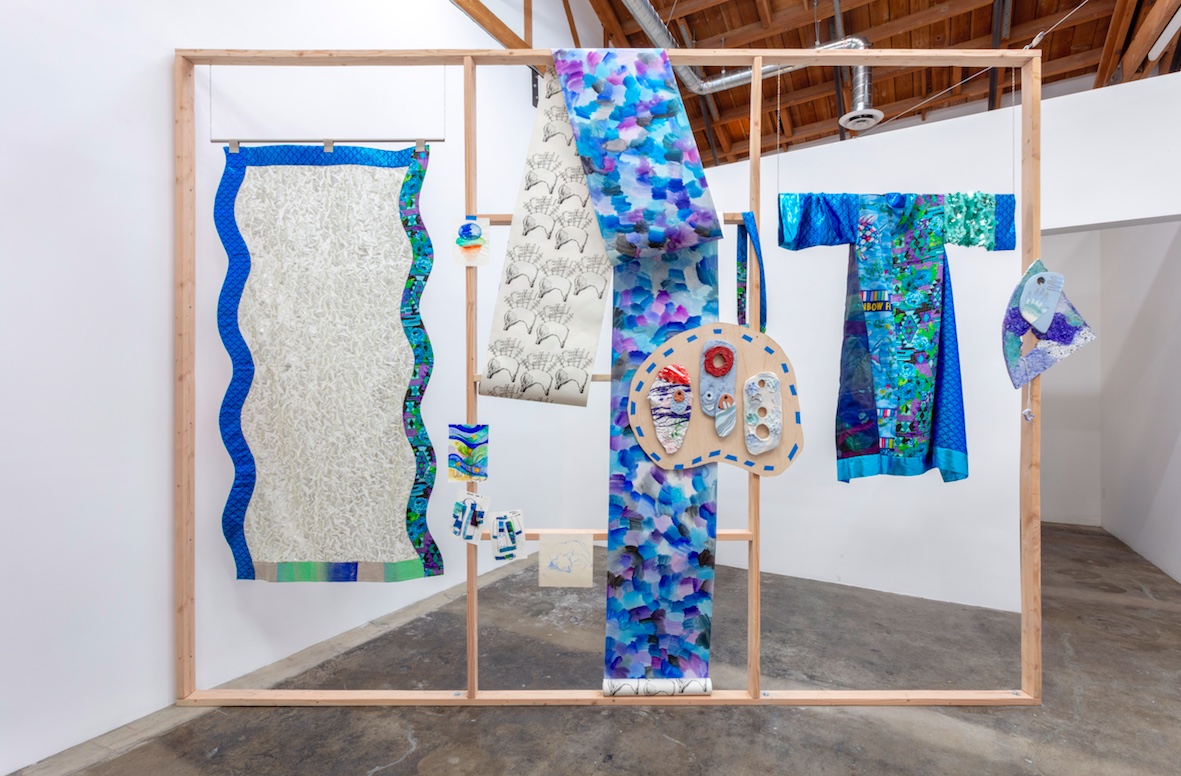
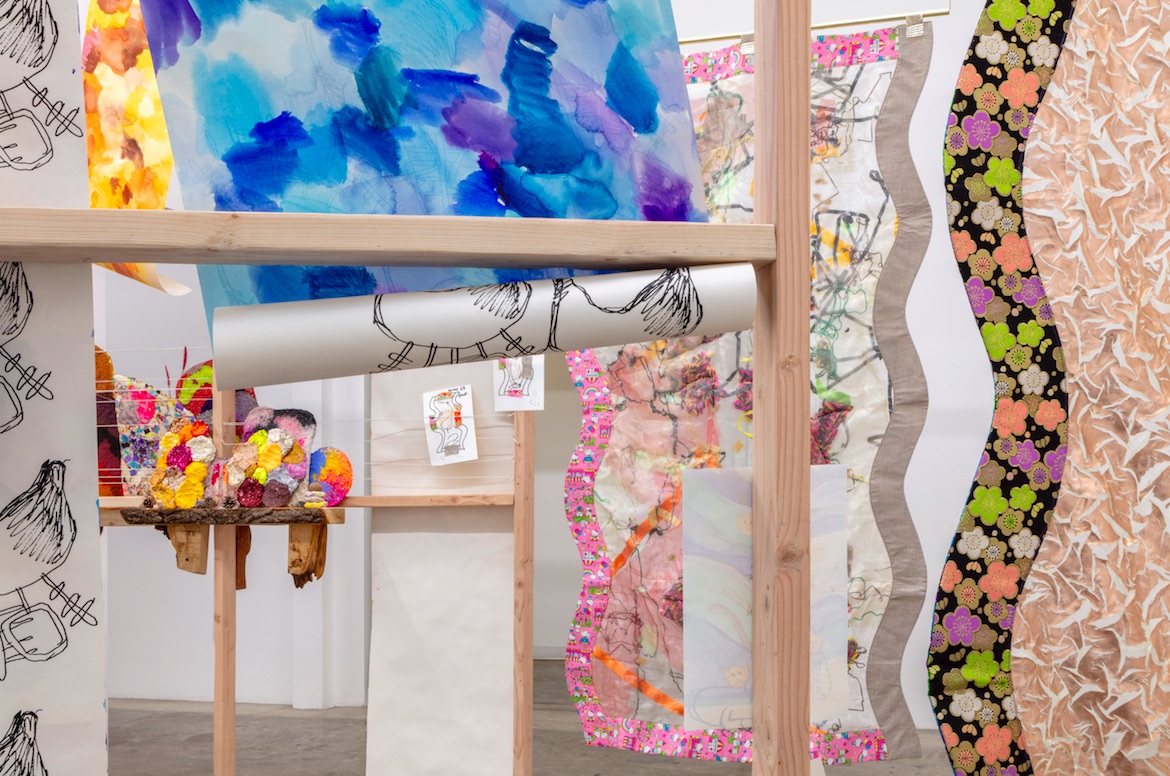
Ludovica Gioscia, Arturo and the vertical sea, installation view at Baert Gallery, Los Angeles 2021, Photo: Joshua White
AL
The dialogue between you and Arturo necessarily implies a very close connection with your pet. Your project makes me think of the concept of empathy, and the need that the human species must rediscover to create a new dialogue with otherness, escaping from the comfort of reality and the anthropogenic dynamics that are familiar to it.
Chinese scholar Hung Ruyu speaks of “ecopedagogy” as a new form of education to develop “ecophilia”. Do you think that your artistic exercise could be an example of how to enter into a creative dialogue with other worlds and living beings?
LG
I am very interested in other worlds as places where alternative narratives exist and where events may be understood from different perspectives and contexts. These spaces are not outside of our sphere of cognitive perception, so I would not qualify them as fictional. ‘Other’ here does not imply a world that happens by virtue of fiction, but rather as an alternative to the one we are experiencing at this very moment. These worlds are spaces that I seamlessly inhabited as a child. They were gradually eroded by the western education system I grew up in, based on a model of linear time and disembodied abstract thinking. The consequence of this model is that I was brought up to understand life as an arrow travelling from left to right and encouraged to forget about my right brain hemisphere – the emotional brain. Yet that is where empathy is developed, and where important skills for interspecies communication reside. Certainly we must invest in forms of communication that do not rely solely on verbal language.
In my practice I reclaim and expand on those spaces that I once inhabited, and in doing so I hope to build bridges towards yet new ones.
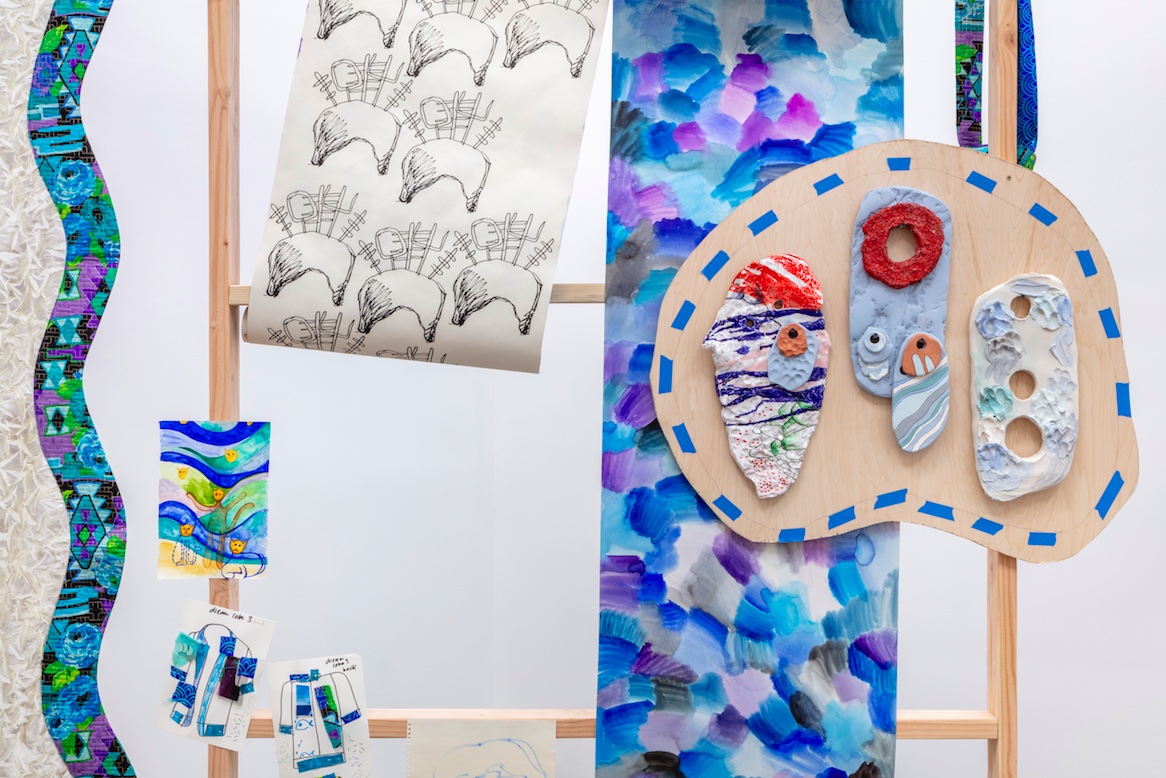
Ludovica Gioscia, Arturo and the vertical sea, installation view at Baert Gallery, Los Angeles 2021, Photo: Joshua White
LUDOVICA GIOSCIA
ARTURO AND THE VERTICAL SEA
05.01 - 13.02.2021
Baert Gallery, Los Angeles


